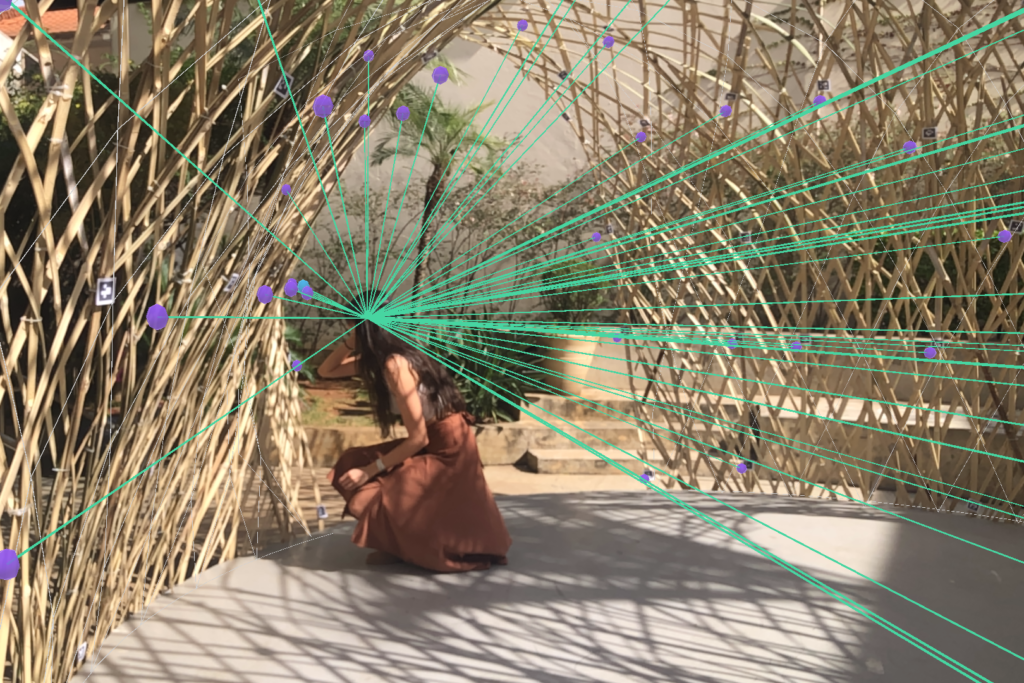
augmented reality for bamboo construction
belas bamboo
type: augmented reality + bamboo construction workshop
role: tutor assistant
collaboration: Architectural Association Visiting School Sao Paulo and SUBdV Architecture
led tutors: Kristof Crolla and Garvin Goepel
location: Belas Artes, Sao Paulo, Brazil
year: 2022
The belas bamboo was developed at the Architectural Association Visiting School Sao Paulo in 2022. My role was to organize the workshop (communication and publicity) and assist the tutors by teaching the Anemone plugin, supporting students with Grasshopper, and supporting the construction process. The workshop used Augmented Reality (AR) to guide the manual fabrication of complex bamboo geometries. The material was chosen for its local availability, fast growth, and carbon-sequestering properties. The course aimed to merge bamboo construction with digital technologies to create bending-active bamboo shell structures.
The workshop was divided into digital and hands-on classes. The assistants taught the basics of Rhinoceros, Grasshopper, and Anemone. Kristof Crolla explained how to generate buildable complex systems from a simple combination of regular planes. Garvin Goepel discussed constructions aided by Fologram and holographic devices (Microsoft HoloLenses and handheld smartphones).
The workshop also involved visiting a bamboo plantation and lectures from João Nunes and Andry Widyowijatnoko, both bamboo specialists. Nunes recommended using Bambusa Vulgaris Tuldoides because it is flexible, can be cut to 6-meter poles, and has a diameter of approximately 4 cm at its base and 3 cm at the top. It was split into four strips to allow more flexibility.
Finally, we started the hands-on classes, dividing the students into two groups to test different physical models. The first group built a model using long and continuous sticks, while the second used overlapping shorter sticks. The overlapping model resulted in a stronger structure, particularly in the critical points. The bamboo pavilion was built following the same steps as the physical model with overlaps. In both, we were aided by Augmented Reality to cut, assemble, and “pop up” the gridshell. To conclude, we included the diagonals and started the densification of the pavilion with more bamboo sticks.
design process
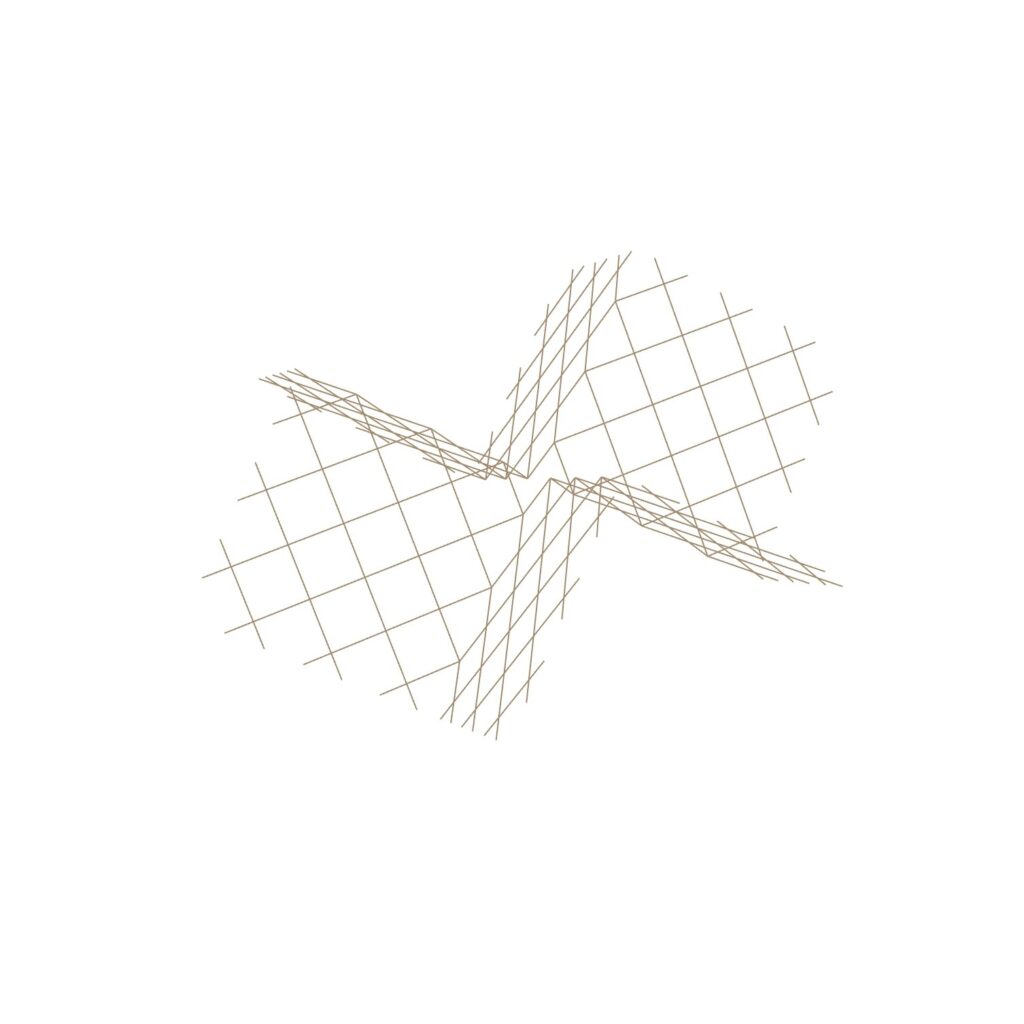
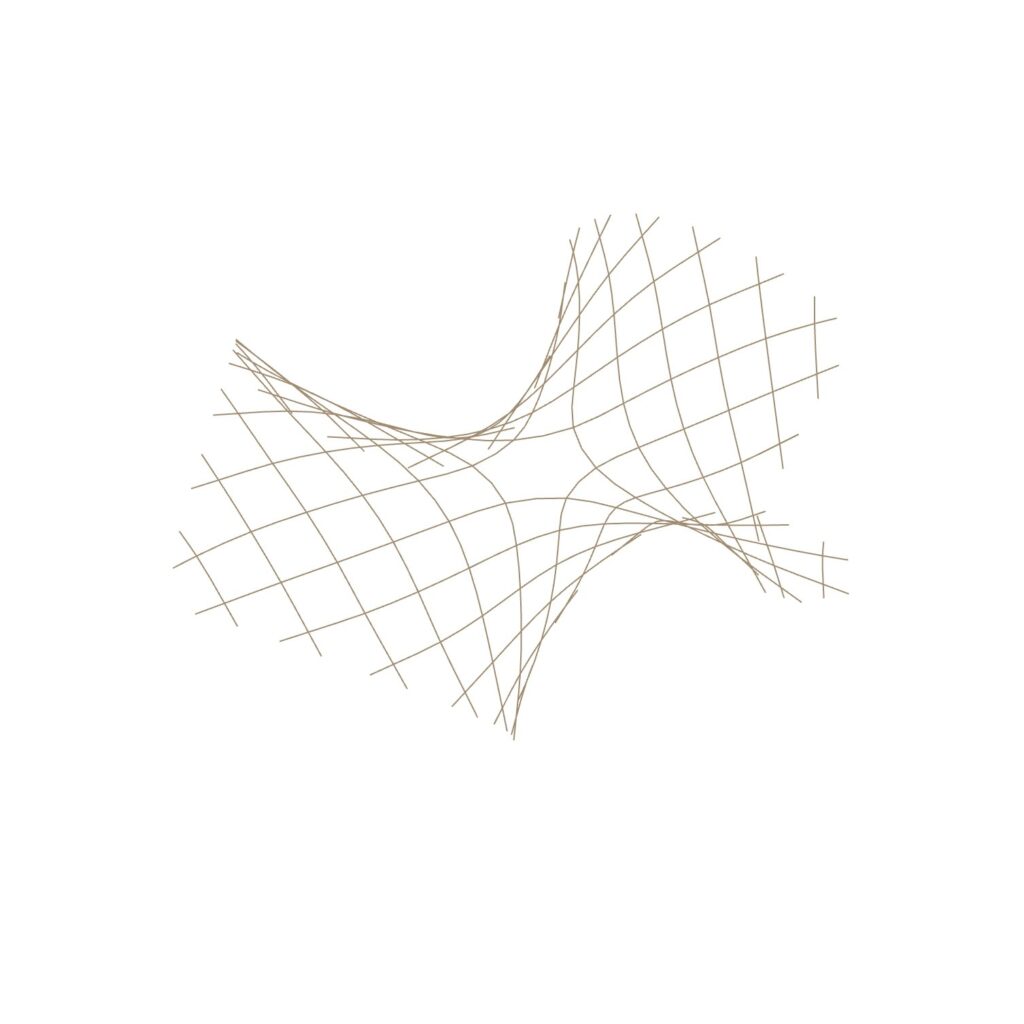
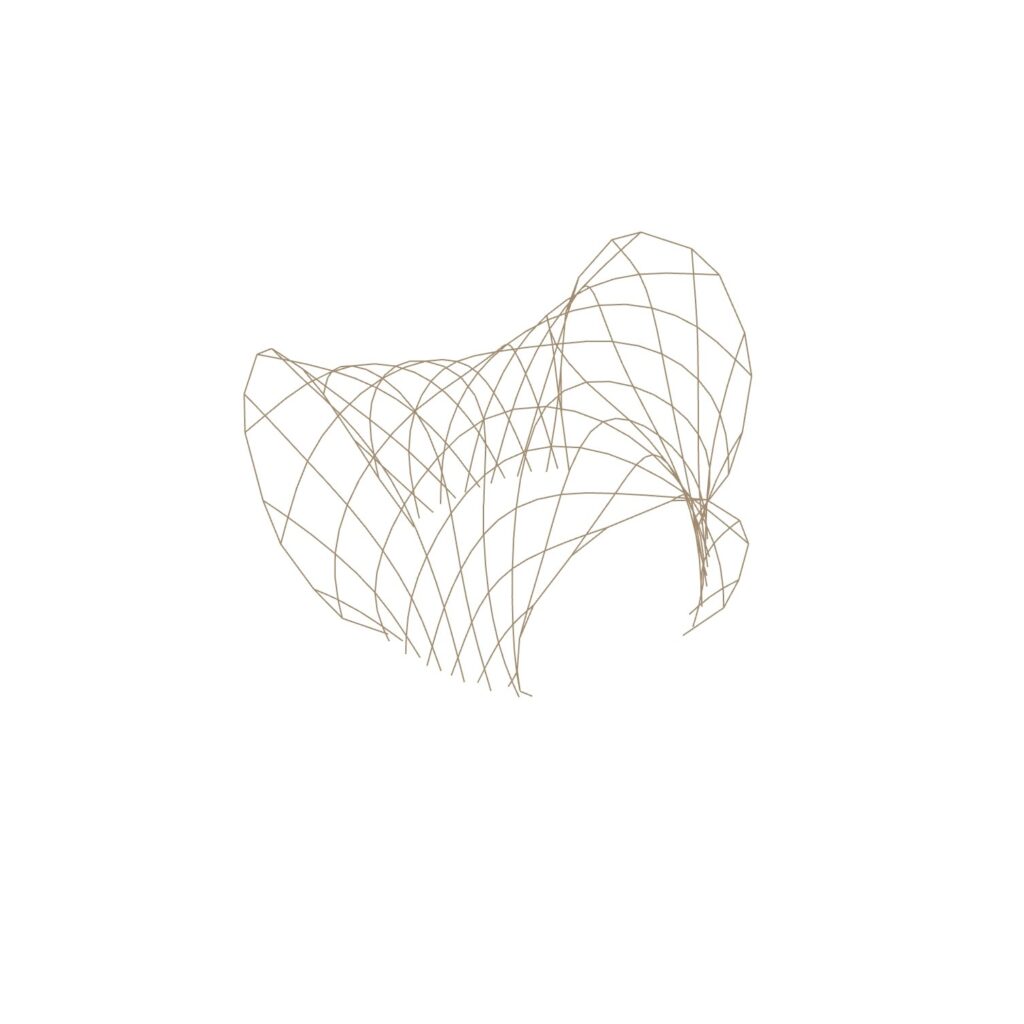
construction process
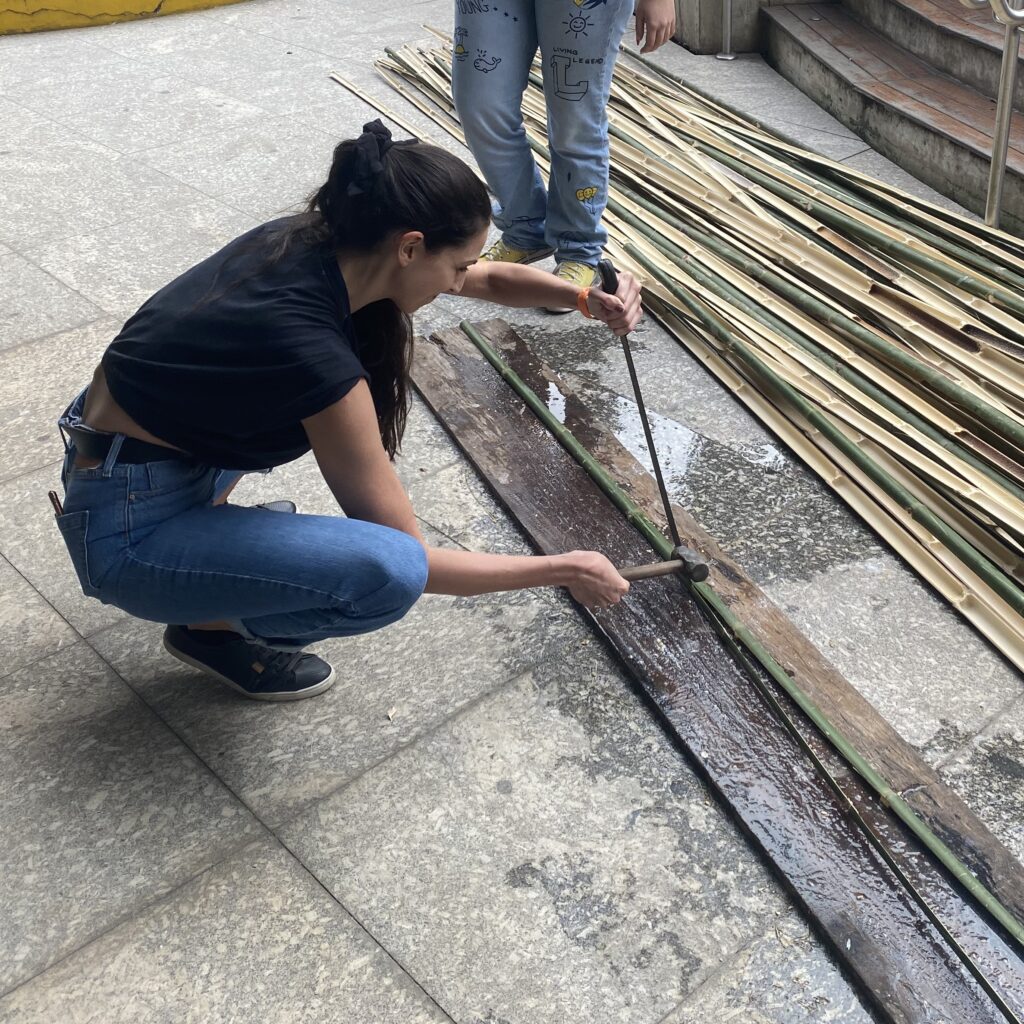
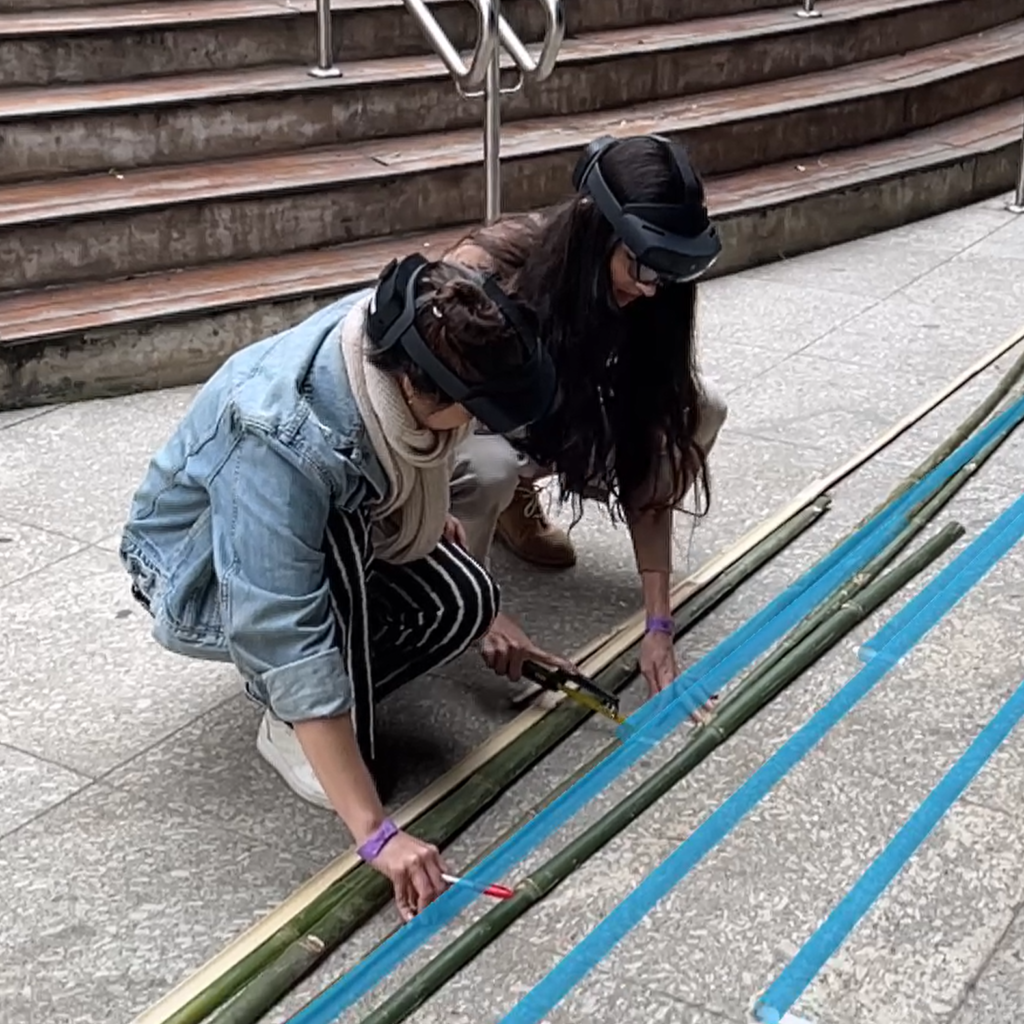
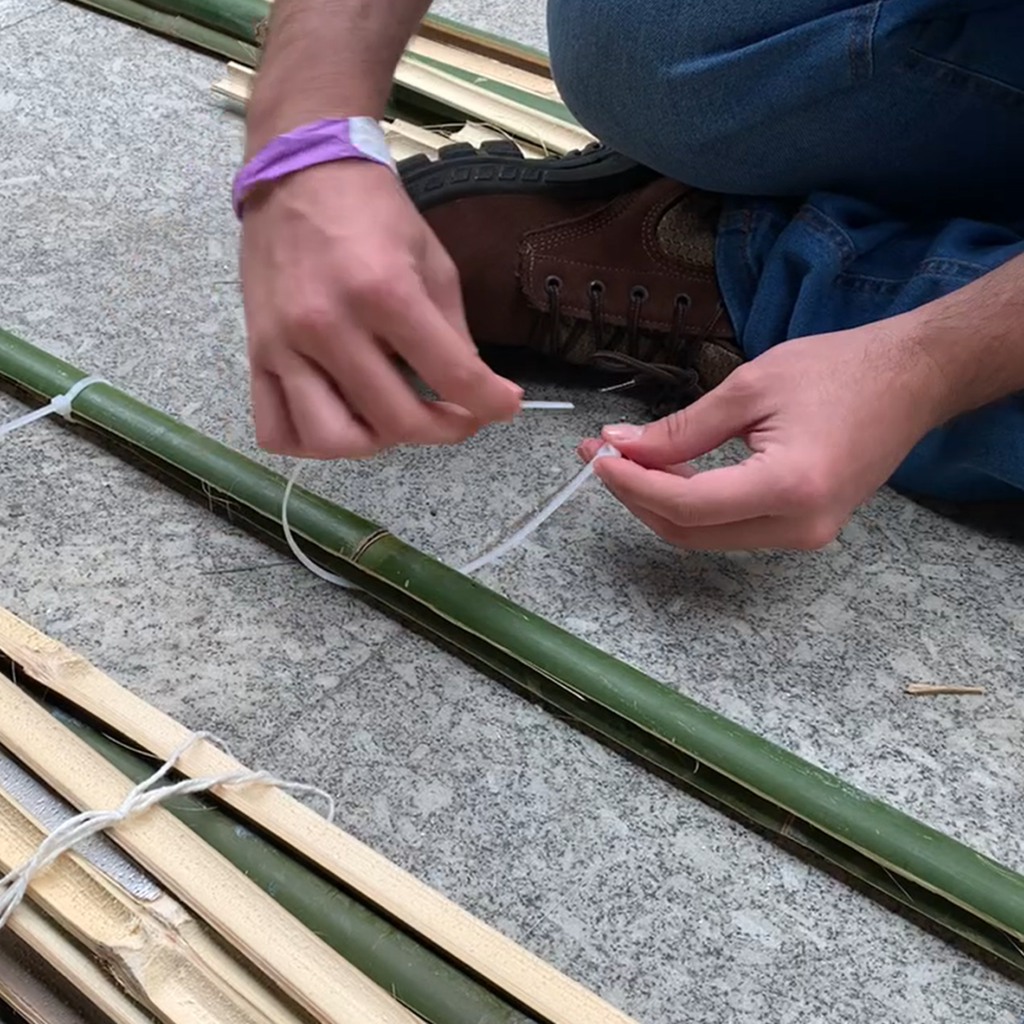
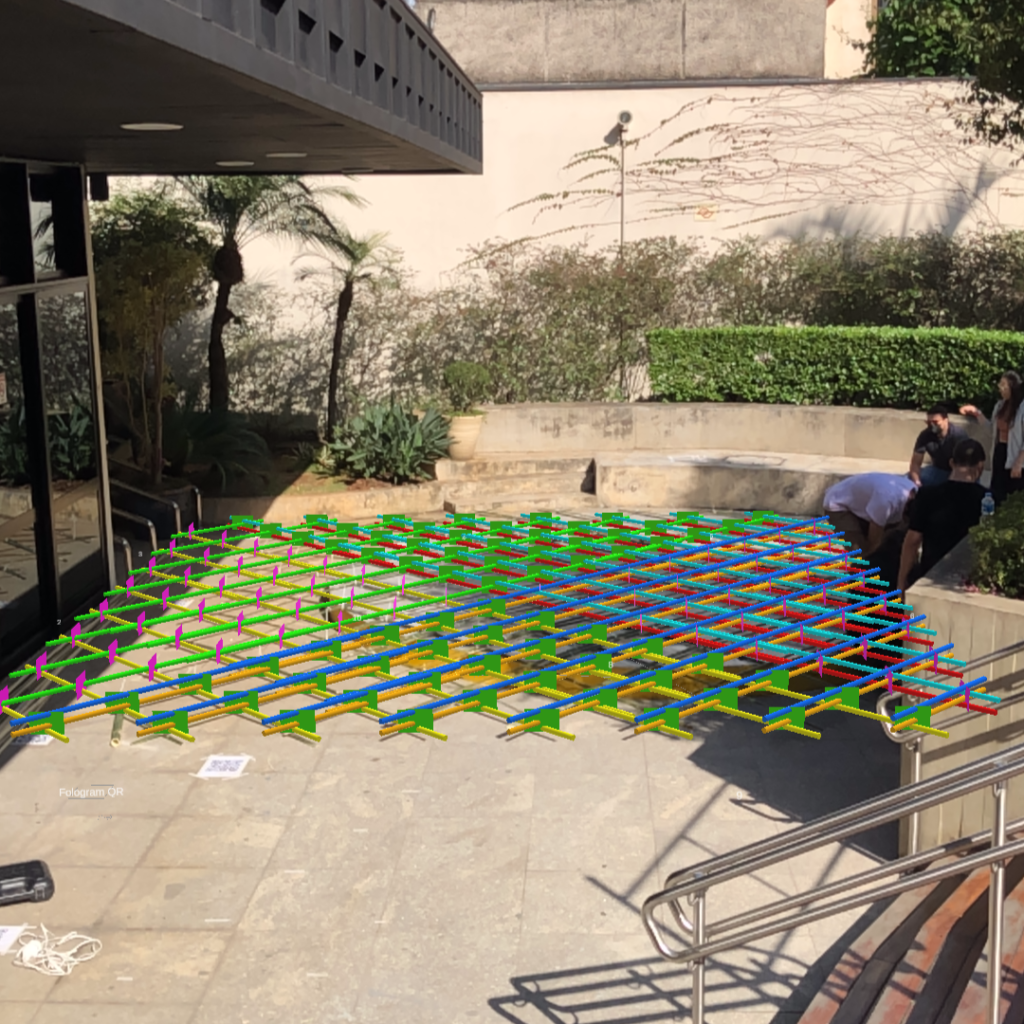
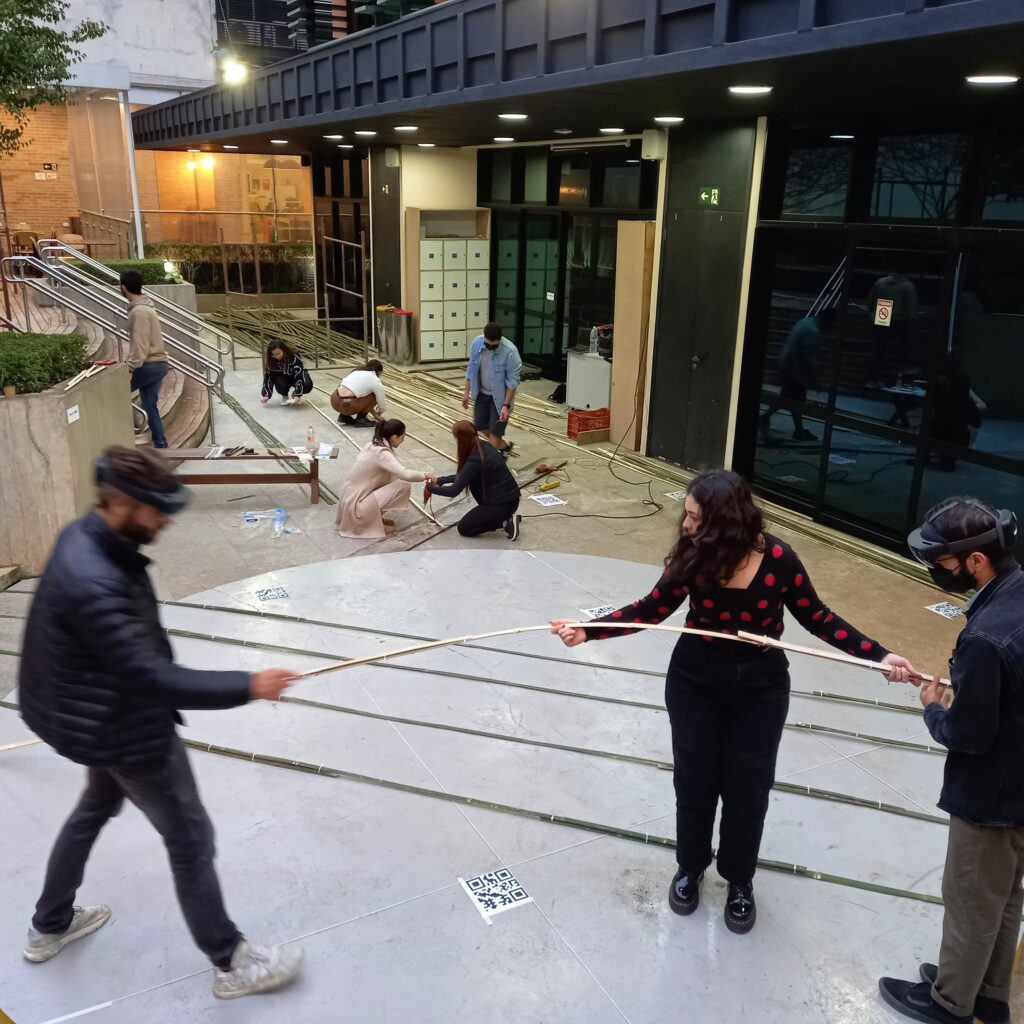

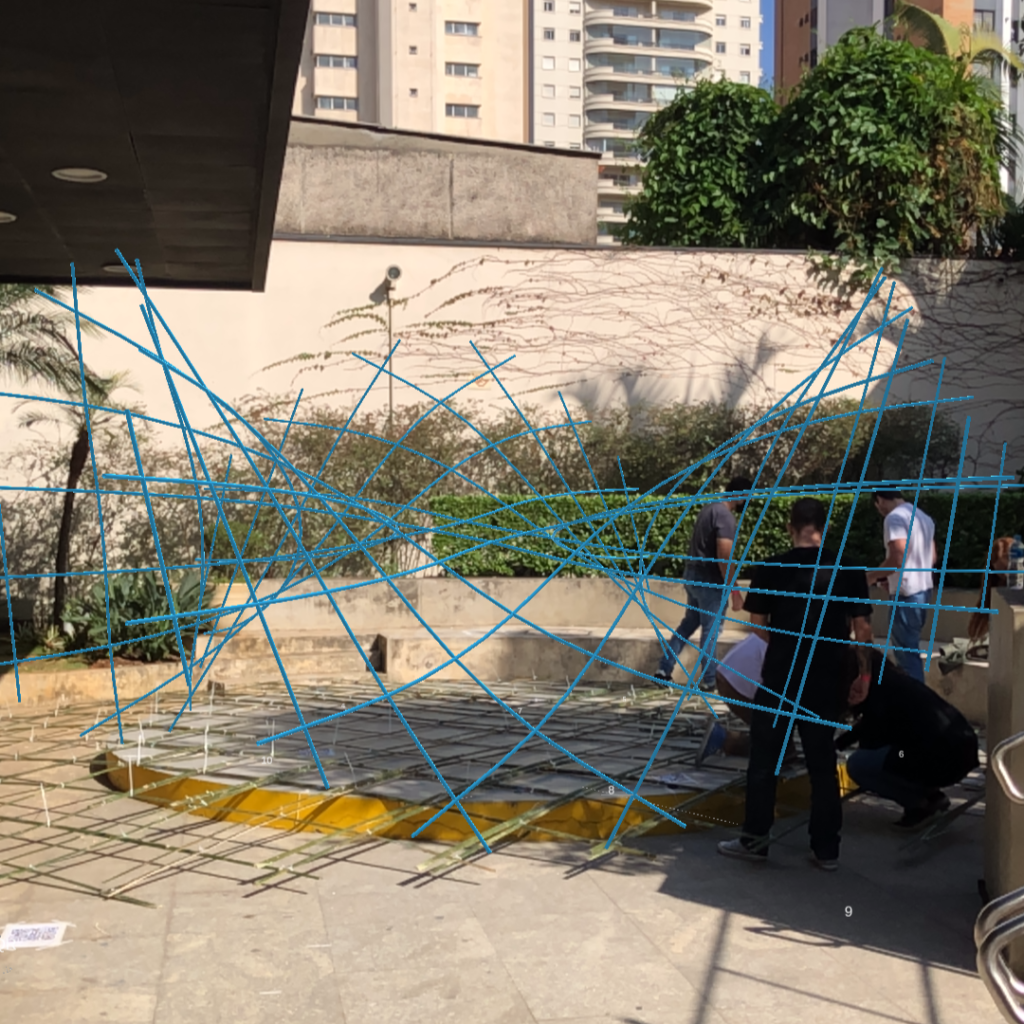

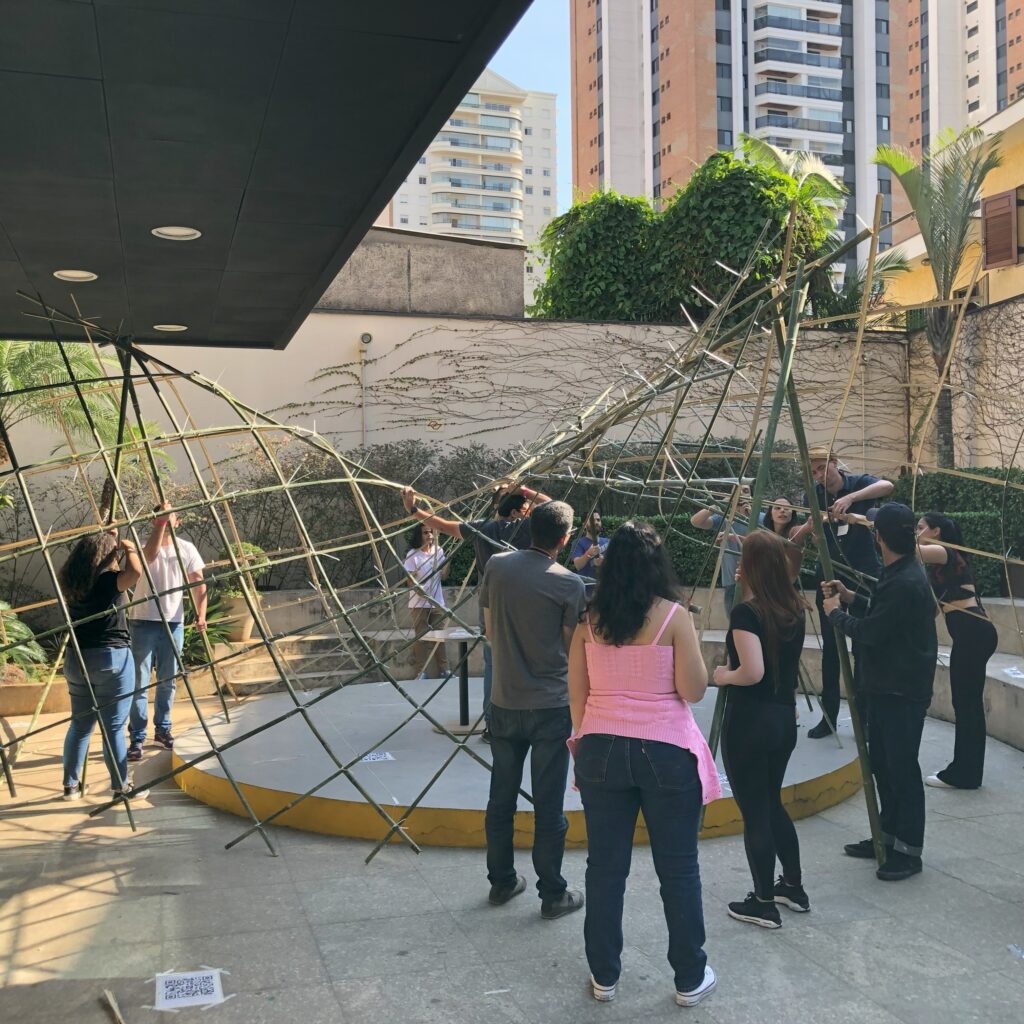
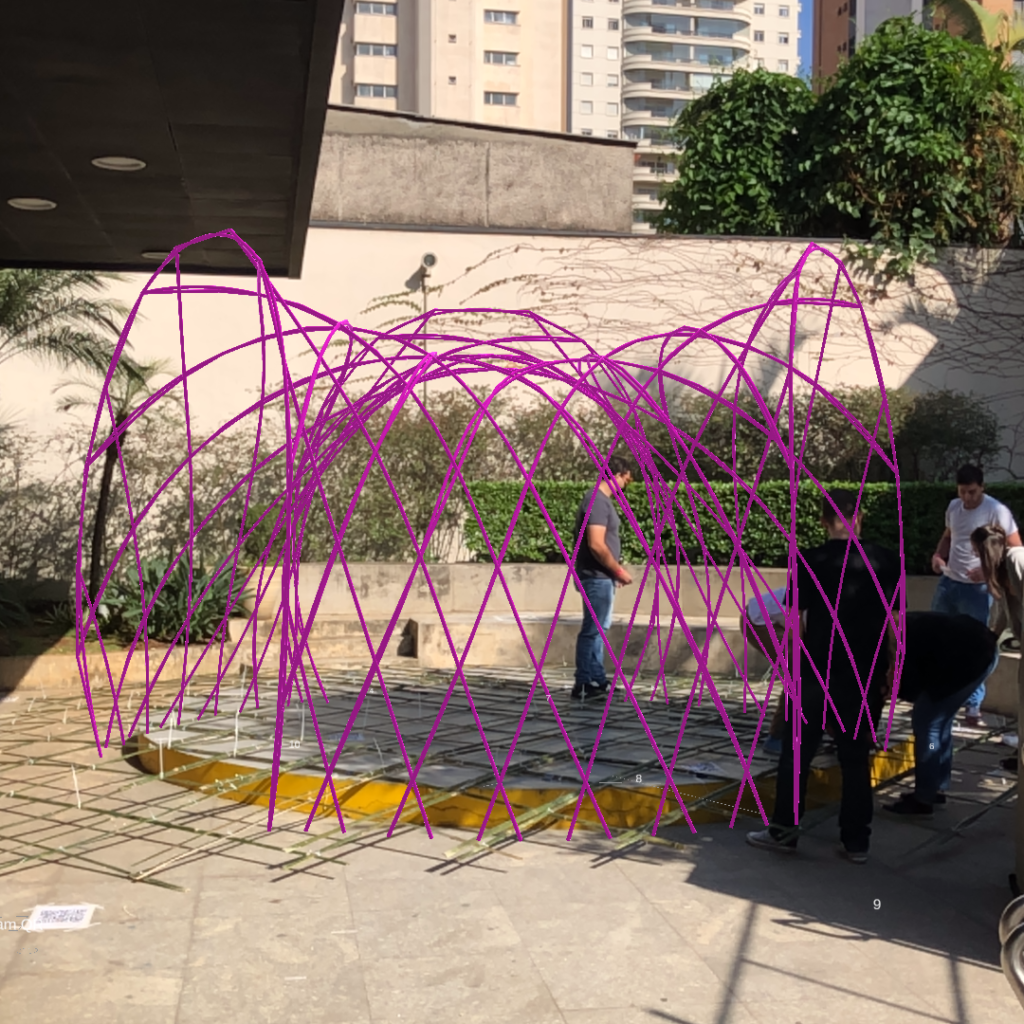
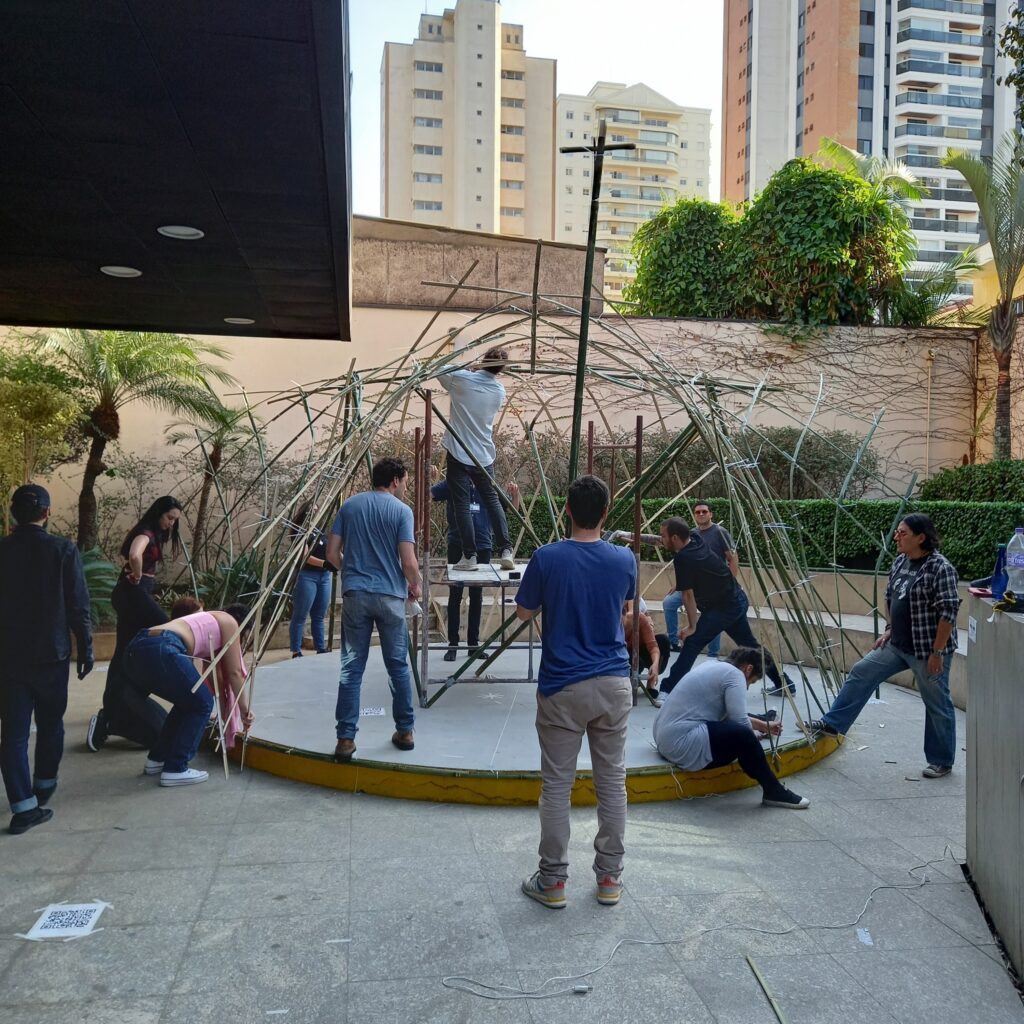

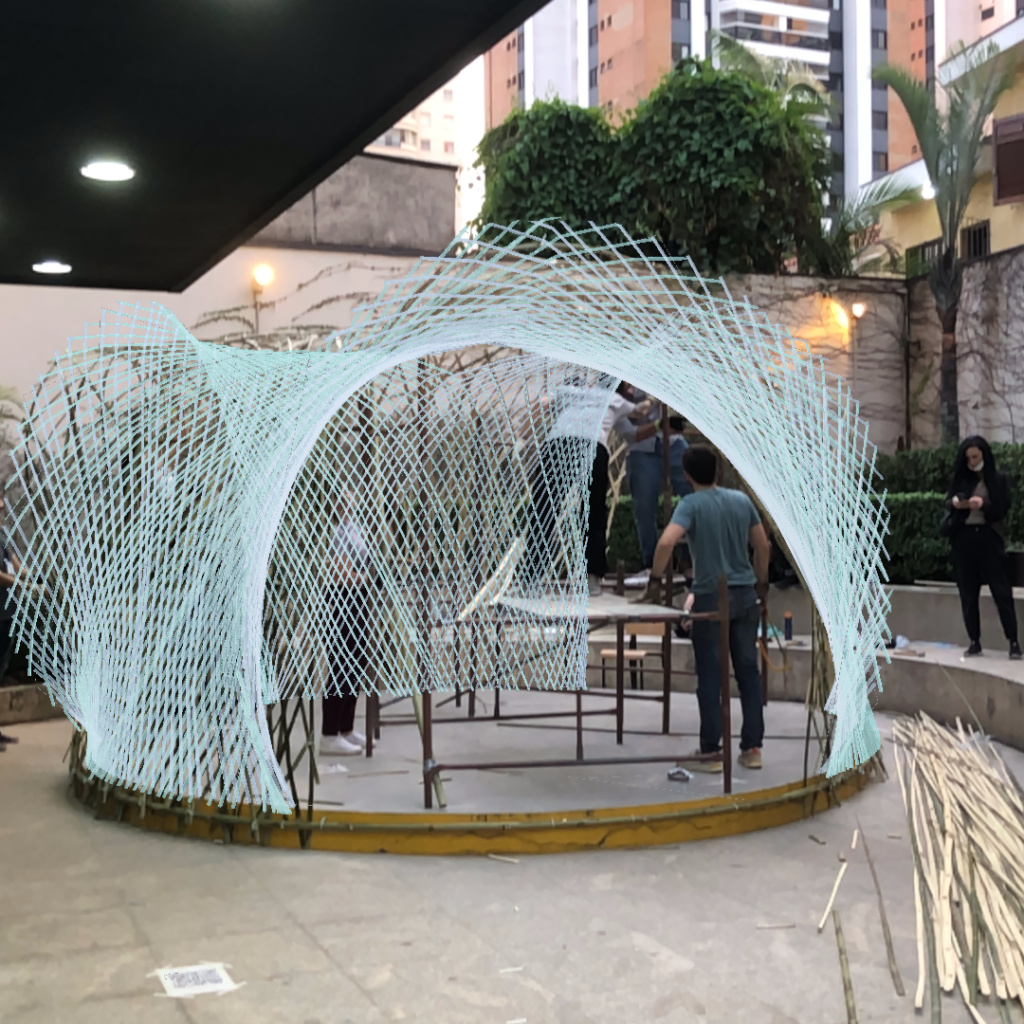
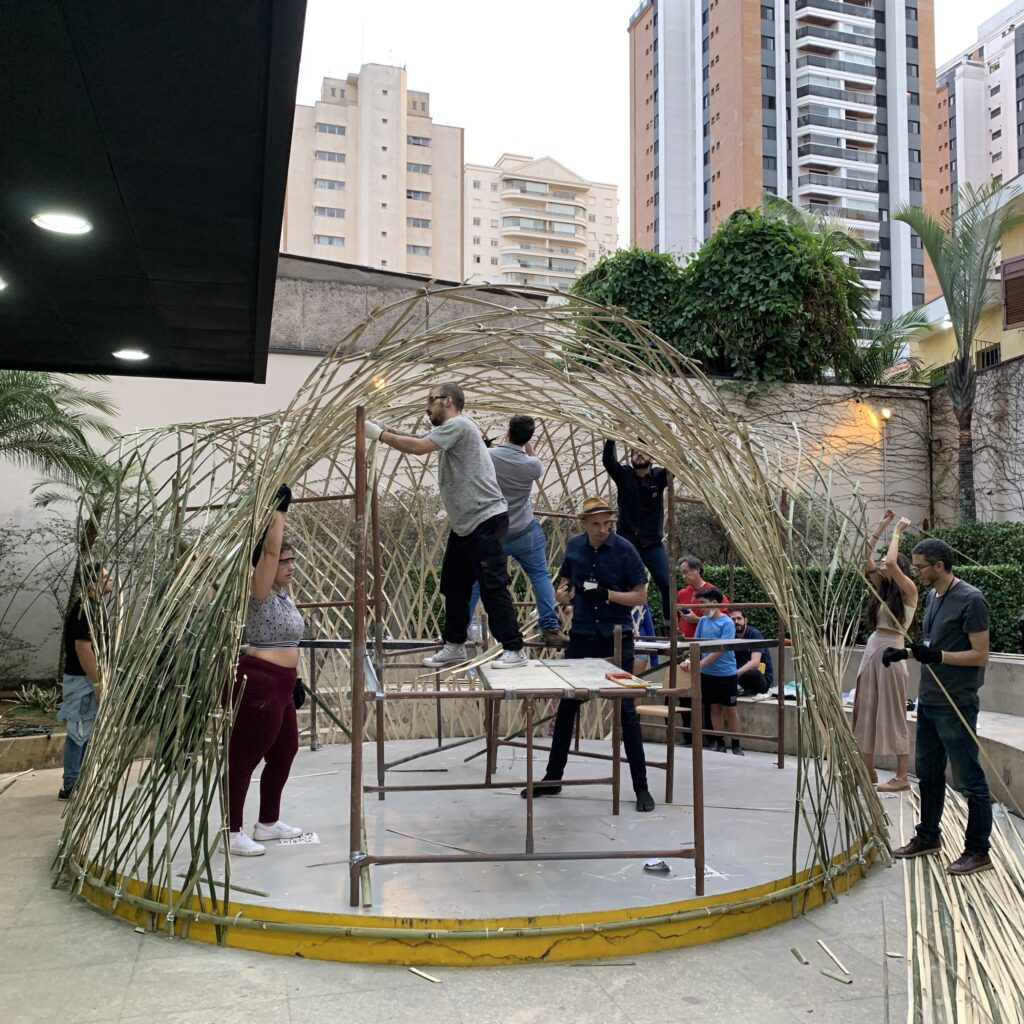
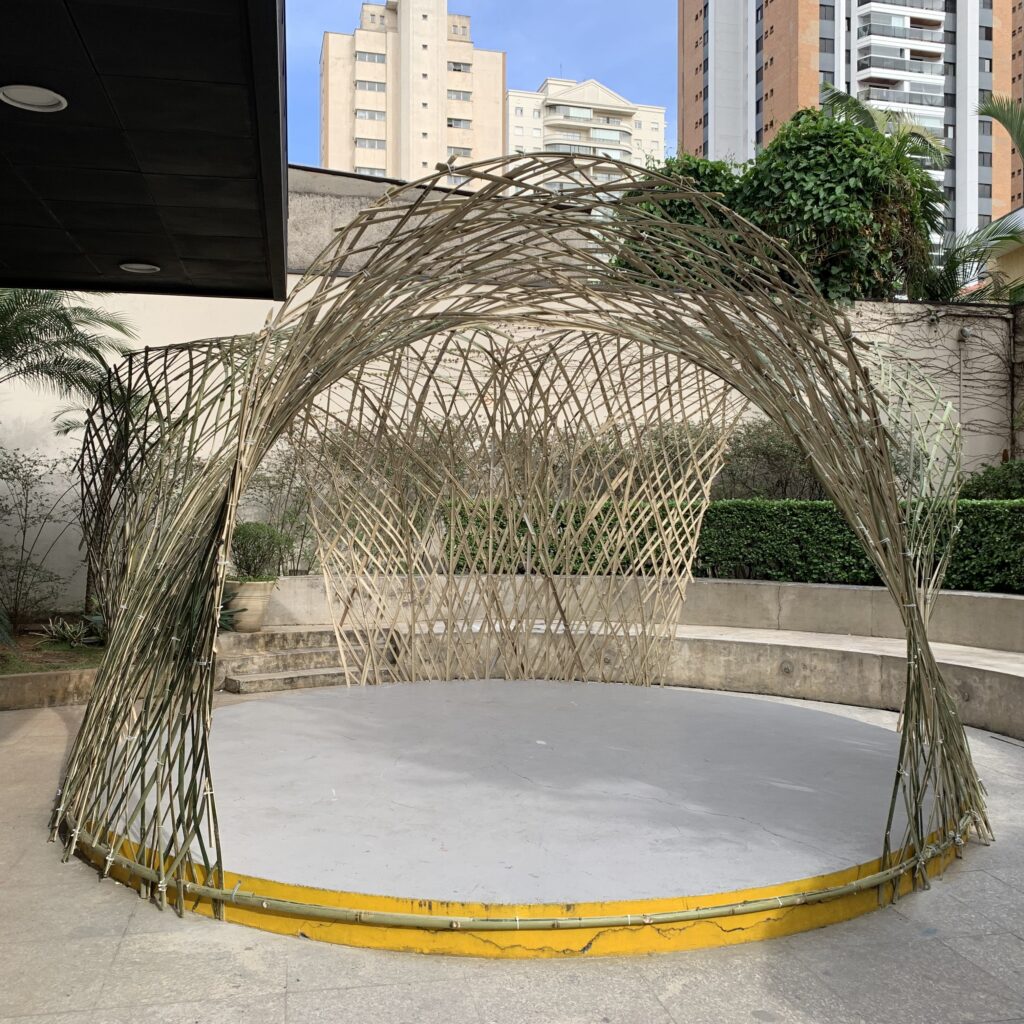
reverse path
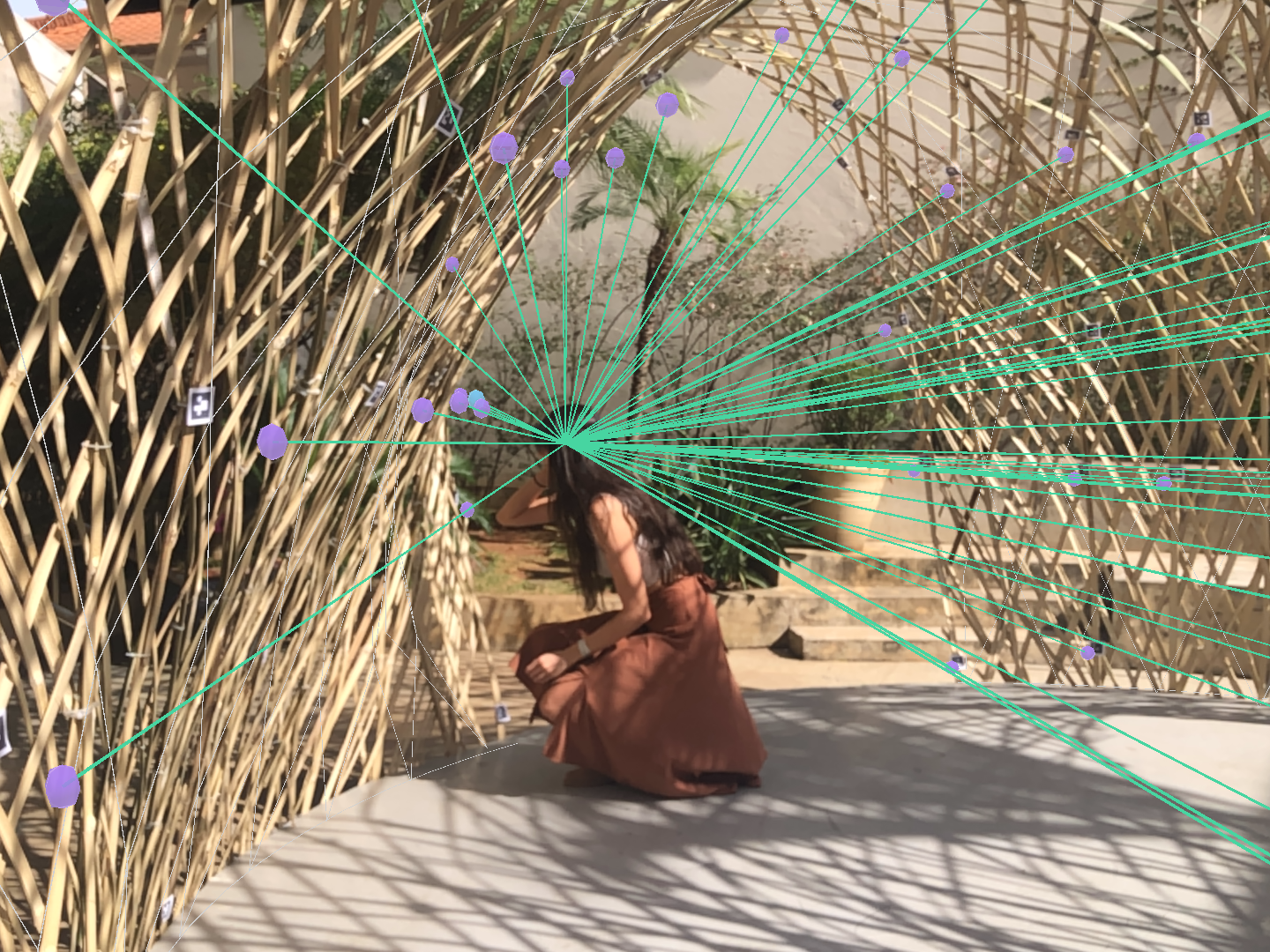

final result
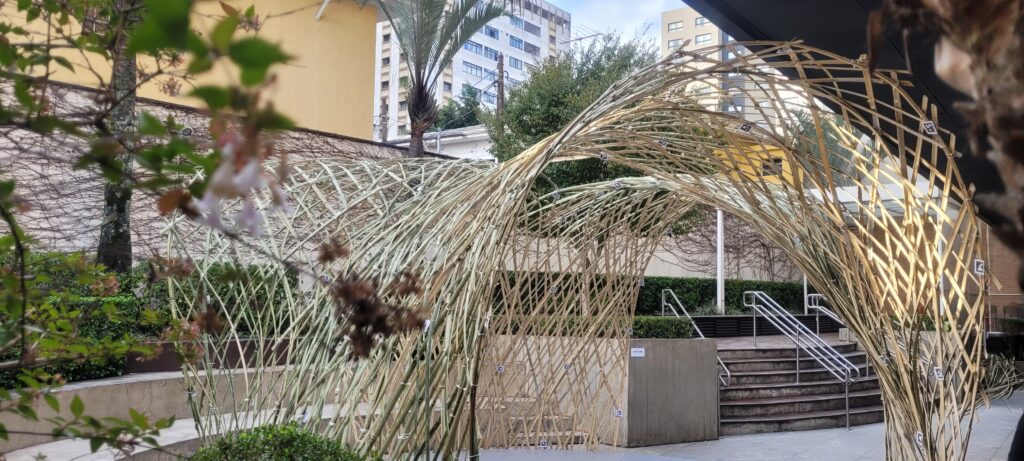
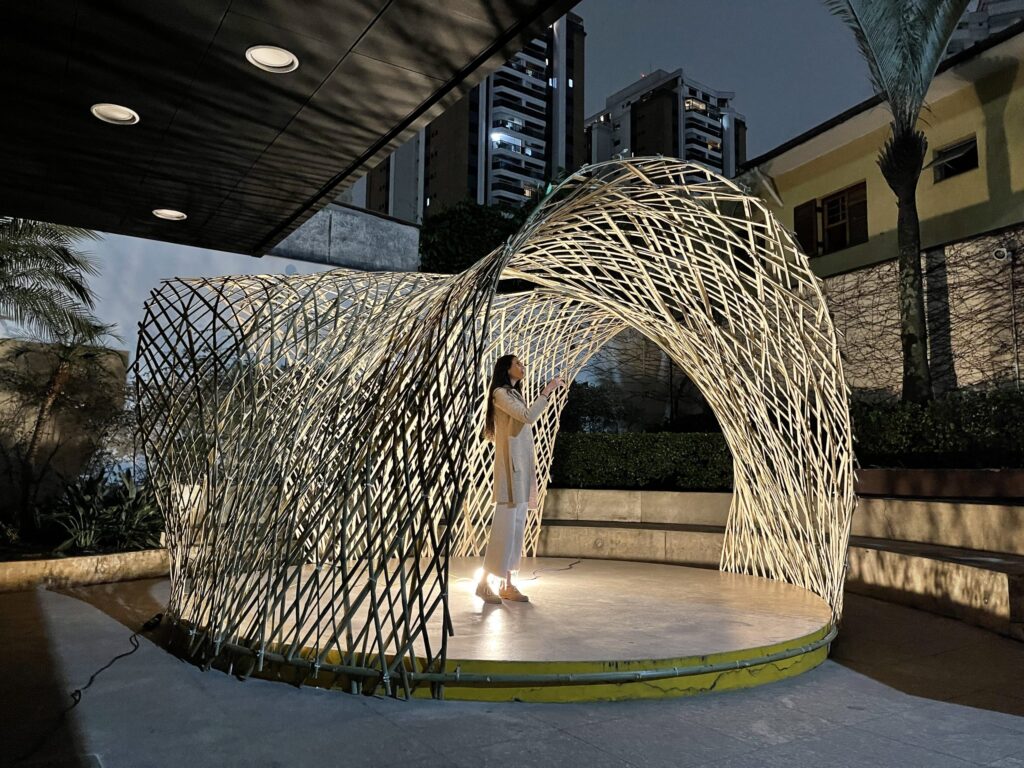


team

Tutors: Kristof Crolla, Garvin Goepel;
Coordinators: Anne Save de Beaurecueil and Franklin Lee (SUBdV Architecture);
Assistants: Ernesto Bueno, Camila Calegari Marques, Henrique Lattes Borçato, Orion Campos, Jamie Vega;
Participants: Júlia Gasparini, Brianna Bussinger, Mattheus Lucchi, Vivian Provasi, Mansur Arevalo, Beatriz Pimentel, Felipe dos Santos Tofaneli, Raik Lira, Pedro Rabelo Mayara Lana de Oliveira, Milena Tada and Ana Clara Queiroz.